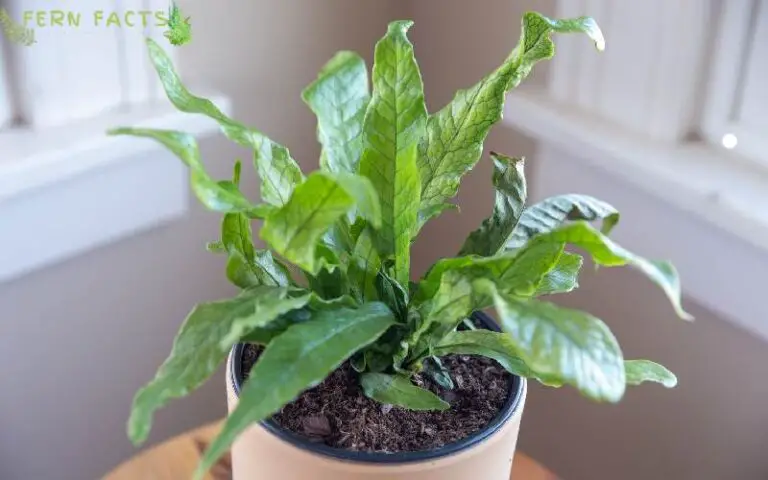Foxtail Fern Vs Asparagus Fern
Foxtail asparagus and asparagus ferns – do you know the difference between these two ferns?
Surprisingly, Foxtail ferns belong to the Asparagaceae family. Therefore most of the characteristics are quite similar to each other.
Still, I’ll try to differentiate both foxtail ferns and asparagus ferns in terms of their general descriptions, native range and habitats, light, soil, water, temperature, humidity, and Hardiness zone.
So stay tuned to this article.
Overview of Foxtail Fern vs Asparagus Fern
| Characteristic | Foxtail fern | Asparagus fern |
| Botanical name | Asparagus densiflorus | partial, fully shaded, bright place |
| Plant | Evergreen perennial | perennial, herbaceous |
| Native range | South Africa | Europe, Western, Asia |
| Height | 2 to 3ft | About 3 ft tall and 4 ft wide (depending on the species) |
| Shade | partial to full | partial, full shaded, bright place |
| Temperatures | 65 to 75° F | 70 to 80° F |
| Hardiness zone | 9,10,11 | 7 to 11 (depending on the species) |
General Characteristics of Foxtail Fern vs Asparagus Fern
Now, let’s go through some basic and general characteristics of these ferns like their native, habitats, description, light, water, soil, fertilizing, temperature, humidity, and Hardiness zone.
Depending on these factors, we’ll try to differentiate these ferns to some extent.
Description – Foxtail Fern vs Asparagus Fern
Asparagus ferns are bright green textured foliage with different varieties. On the contrary Foxtail ferns are evergreen perennial plants that have fluffy herbs and stems like pine needle-like leaves.
Asparagus ferns are the whole species and foxtail ferns are one of the famous varieties of Asparagus species.
Native & Habitats – Foxtail Ferns vs Asparagus Ferns
Asparagus is native to Eurasia, which means Europe and western temperate Asia. Depending on its individual varieties, the asparagus native range varies.
In general, they cover all European and Asian countries. On the other side, foxtail ferns are widely distributed in South Africa where it has immense growth.
In South Africa, they tend to habitat mostly in rocky woods, open woods, tropical areas, and savanna places where asparagus ferns inhabit humid forests, shrubs, and many garden areas depending on the species.
Light and Shade- Foxtail Ferns vs Asparagus Ferns
Now if you talk about their general shade requirements, both asparagus and foxtail ferns thrive in partial to fully shaded places.
However, foxtail ferns prefer soft light areas with filtered shade that would be a perfect light arrangement for them. Heated afternoon sun exposure can burn out their fronds or leaves.
Conversely, Asparagus ferns are fond of dappled shade, which means partial bright place or indirect sunlight. But it still varies from species to species.
Some species of the asparagus fern can tolerate sun whereas some can tolerate low light conditions. It depends on which species you are planning to buy.
Water and Soil- Foxtail Ferns vs Asparagus Ferns
Both foxtail ferns and asparagus ferns enjoy moist and well-drained soil to thrive. It’s not very indifferent as foxtail ferns are one of the varieties of Asparagus ferns.
Therefore, most of the characteristics resemble each other. Thus, both foxtail ferns and asparagus ferns thrive in moist and damp soil along with rich humus soil.
Fertilizer -foxtail Ferns vs Asparagus Ferns
Both the ferns require some portion of nutrition during their growing seasons. Foxtail ferns prefer 10-10-10 plant food with half the strength of both slow-release fertilizer and liquid fertilizer in the soil.
they can be well adaptable with both the mixture. For outdoor foxtail ferns, they prefer amended soil, compost topped with two inches of mulch in the soil annually in the fall season.
On the other hand, asparagus ferns need feeding during the early summer and spring seasons in every 30 days gap. Organic compost or balanced Fertilizer in the ratio of 10:10:10 will also be suitable for them.
Temperature, Hardiness, and Humidity- Foxtail Ferns vs Asparagus Ferns
Almost all the species of Asparagus thrive in around 70°F climates whereas foxtail ferns prefer 65°F to 75°F atmosphere. Since they are of the same breed, that’s why they also prefer a similar Hardiness zone.
Foxtail ferns mostly prefer 9a to 11b Hardiness while Asparagus’s average hardy zone is 7 to 11. Both ferns enjoy a slightly warm atmosphere with immense humidity.
If the temperature or humidity level drops then their survival becomes very challenging.
Economic Uses of Foxtail Ferns vs Asparagus Ferns
Both ferns are quite attractive and popular as ornamental plants. Depending on the species category, you can make different uses of Asparagus fern both indoors and outdoors.
You can also decorate them in the basket and hang them on your balcony. Most of the asparagus fern species are best grown in small pots. Because of their tiny and small sizes, they enhance the beauty that magnifies your house’s appearance.
Conversely, foxtail ferns are better to use as outdoor plants. Since they tend to grow quite medium to large in size, outdoors would be perfect for them to plant.
You can also place them in front of your doors or garden as garden filler. However, keep that in mind Asparagus ferns including foxtail ferns tend to grow quite invasively therefore you need to be very careful about their growing conditions.
They might invade other plants’ spaces in your garden or might harm them as well if not pruned timely. In many gardens, parks, and restaurants these ferns are used as fillers or coverers which has also created a valuable impact on their cultivation as well.
Closing Statement
In a nutshell, Asparagaceae family where asparagus ferns are the main species foxtail is one of the famous varieties under this category.
Although both of the ferns belong to the same family, they have some differences in terms of their growing phase such as descriptions, native range and habits, temperature, and economic uses.
Still, their lighting, watering, soil, and fertilizing proponents are quite similar to each other. In short, it’s not that reliable to the exact difference between the foxtail ferns and other asparagus ferns species.
Although foxtails have some differences, still foxtail is one of the popular varieties that belong to the same family under the same species.







